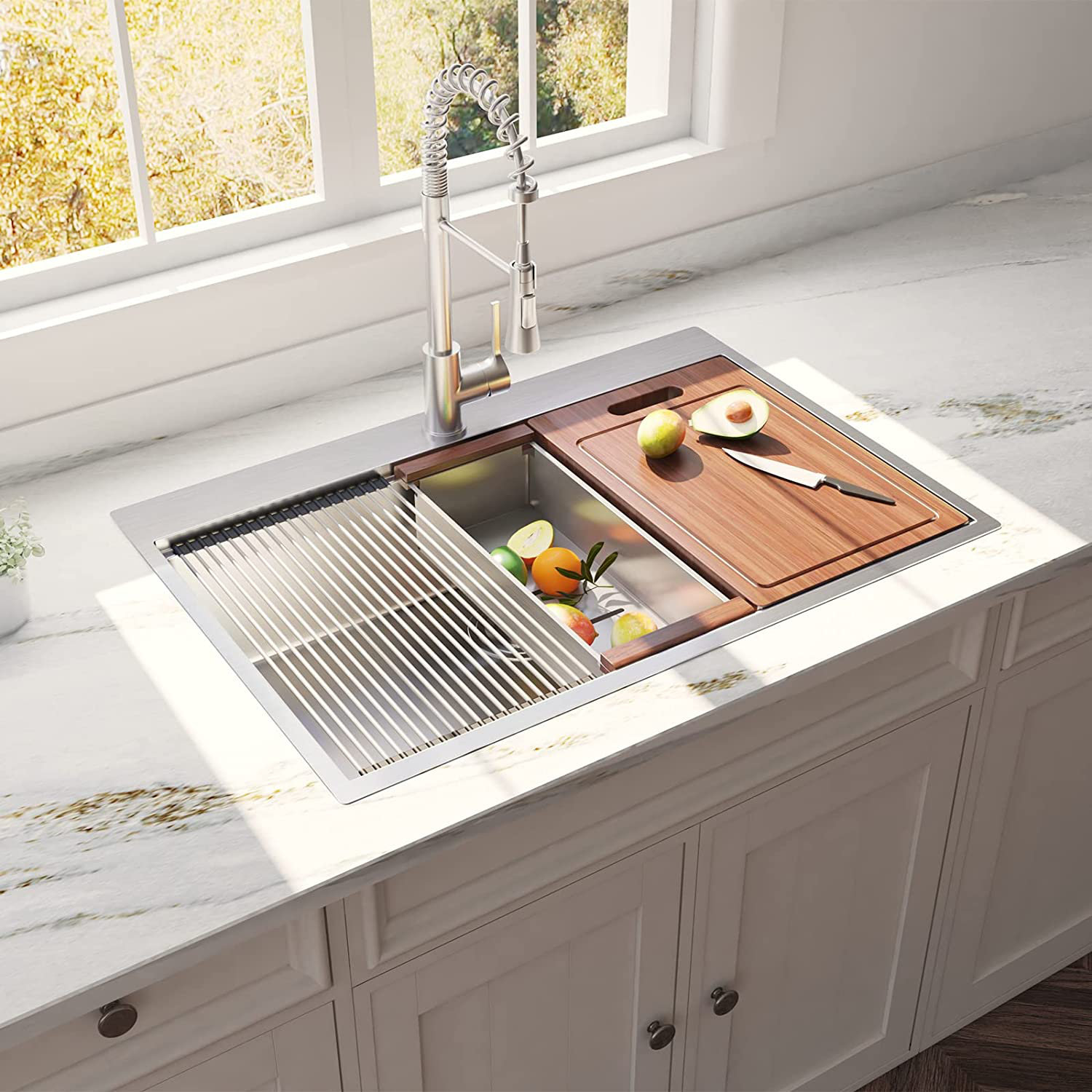Introduction: The Importance of Choosing the Right Sink Size
Sinks are essential fixtures in kitchens, bathrooms, and laundry rooms, serving as functional workstations for various tasks such as washing dishes, brushing teeth, and doing laundry. When renovating or remodeling a space, choosing the right sink size is crucial for ensuring optimal functionality, efficiency, and aesthetics. In this guide, we will explore the standard sizes of sinks available on the market and provide practical tips for finding the perfect fit for your space.
Standard Sink Dimensions: Common Sizes and Variations
Sinks come in a range of sizes and configurations to suit different needs and preferences. While there is no one-size-fits-all solution, several standard dimensions are commonly available:
- Kitchen Sinks:
- Single Bowl: Standard single bowl kitchen sinks typically measure 22 to 30 inches in length, 24 to 33 inches in width, and 8 to 10 inches in depth.
- Double Bowl: Double bowl sinks are available in various configurations, with each bowl measuring approximately 14 to 18 inches in length, 16 to 22 inches in width, and 8 to 10 inches in depth.
- Farmhouse Sink: Farmhouse or apron-front sinks feature a large, deep basin and a protruding front panel. These sinks typically measure 30 to 36 inches in length, 20 to 24 inches in width, and 8 to 10 inches in depth.
- Bathroom Sinks:
- Undermount Sink: Undermount bathroom sinks are installed beneath the countertop for a sleek, seamless look. Standard sizes range from 16 to 20 inches in length, 12 to 18 inches in width, and 5 to 8 inches in depth.
- Drop-In Sink: Drop-in or self-rimming bathroom sinks are installed on top of the countertop, with the rim resting on the surface. These sinks typically measure 18 to 25 inches in length, 16 to 20 inches in width, and 6 to 8 inches in depth.
- Laundry Sinks:
- Utility Sink: Utility sinks are designed for heavy-duty tasks such as washing clothes, bathing pets, and cleaning equipment. Standard utility sinks measure 20 to 25 inches in length, 18 to 22 inches in width, and 10 to 14 inches in depth.
Factors to Consider When Choosing Sink Size
Several factors should influence your decision when selecting the size of a sink for your space. Consider the following:
- Available Space: Measure the available space where the sink will be installed, including the width, depth, and height of the cabinet or countertop. Ensure that the chosen sink size fits comfortably within the allotted space without overcrowding or obstructing other fixtures or appliances.
- Functionality: Consider how you plan to use the sink and what tasks you will be performing. A larger sink may be more suitable for washing large pots and pans in the kitchen, while a smaller sink may be sufficient for handwashing in the bathroom.
- User Preferences: Take into account the preferences and needs of the primary users of the sink. For example, individuals with limited mobility may prefer a shallower sink that is easier to reach, while avid cooks may prefer a larger, deeper sink for food preparation and cleanup.
- Aesthetic Considerations: Choose a sink size and style that complements the overall design aesthetic of the space. Consider factors such as the style of cabinetry, countertop material, and other fixtures to ensure a cohesive and harmonious look.

Practical Tips for Choosing the Right Sink Size
When selecting a sink size for your space, consider the following practical tips to ensure a perfect fit:
- Create a Mock-Up: Use masking tape or cardboard to create a mock-up of the sink’s dimensions on the countertop or cabinet surface. This will help you visualize how the sink will look in the space and ensure that it fits correctly.
- Consider Installation Requirements: Take into account any installation requirements or restrictions, such as plumbing connections, faucet placement, and clearance space around the sink. Ensure that there is sufficient space for installing the sink and connecting the necessary fixtures and appliances.
- Think About Future Needs: Anticipate any future changes or upgrades to your space when choosing the size of the sink. Opt for a versatile size that can accommodate changing needs and preferences over time, ensuring long-term functionality and satisfaction.
- Consult with Professionals: If you’re unsure about the best sink size for your space, consult with a professional contractor, plumber, or interior designer. They can provide expert guidance and recommendations based on your specific needs, preferences, and budget.
Conclusion: Finding the Perfect Balance
In conclusion, choosing the right sink size requires careful consideration of various factors, including available space, functionality, user preferences, and aesthetic considerations. By understanding the standard dimensions of sinks available on the market and considering practical tips for selecting the right size, you can find the perfect fit for your space.


